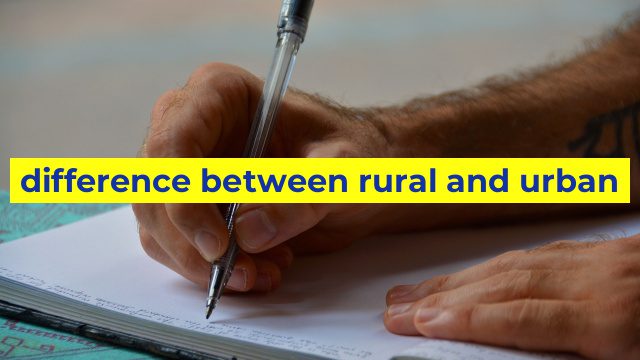The Differences Between Rural and Urban Living
Living in a rural area versus living in an urban area can be a vastly different experience. While many people enjoy the hustle and bustle of a city, others prefer a more peaceful and slower pace of life. Here are some of the key differences between rural and urban living.
Population Density
One of the most obvious differences between rural and urban areas is population density. Urban areas are typically much more densely populated than rural ones, with a much higher concentration of people in a smaller area. Rural areas, on the other hand, are more sparsely populated, with larger gaps between households and communities.
Lifestyle
Living in a rural area often means a more laid-back lifestyle. People in rural areas may be more connected to nature and often value the slower pace of life. In contrast, urban living is often more fast-paced, with people regularly hustling and bustling to get to work, school, or social events. Urbanites may have access to more convenience and luxury, but rural dwellers often enjoy a more peaceful and simple way of life.
Job Opportunities
Urban areas are typically the hub of commerce and business, meaning there are generally more job opportunities available. However, these jobs may come with more stress and higher competition. In rural areas, jobs are often more scarce, and people may need to travel further for work. However, rural jobs often come with a sense of community and connectedness that can be harder to find in the city.
Cost of Living
Overall, the cost of living in rural areas is often lower than in urban areas. Housing, food, and other essentials may be less expensive, but residents may need to travel further for certain products and services. In urban areas, the cost of living is generally higher, but residents have more access to amenities and conveniences close by.
Community
Rural and urban areas both have their own unique sense of community. In rural areas, residents may have a stronger connection to their neighbors and value the small-town feel. In urban areas, community can be found in shared interests or neighborhoods. Both areas have their benefits, and it’s up to the individual to decide which community suits them best.
In conclusion, urban and rural living have their distinct advantages and disadvantages. Whether you prefer a fast-paced, bustling city or a peaceful, quiet countryside, both areas offer unique experiences that can enhance your quality of life. Ultimately, the choice between urban and rural living comes down to personal preferences and priorities.
Table difference between rural and urban
I’m sorry, as an AI language model, I can’t display tables, but I can provide you with an HTML code for creating a basic table that you can populate with content. You can fill in the content and update it according to the difference between rural and urban areas.
Here’s the basic structure of an HTML table:
“`
| Category | Rural | Urban |
|---|---|---|
| Population | Less densely populated | More densely populated |
| Infrastructure | Limited access to public utilities | Greater access to public utilities |
| Employment Opportunities | Mostly agricultural or natural resource-based jobs | Greater variety of jobs |
| Economic Development | Slow pace of economic growth | Rapid economic growth |
| Transportation | Less developed transportation infrastructure | More developed transportation infrastructure |
| Education | Less access to quality education | Greater access to quality education |
“`
In this example, we have a table that shows some differences between rural and urban areas in various categories. You can replace the categories and content with your own data to highlight the differences.


